2013 Acura ILX Review

Acura has long been a pioneer in the compact premium category. There was the Integra and RSX, seemingly axed just before the segment started to go mainstream. Meanwhile, for the more European-minded Canadians, the Honda luxury division continued to sell the Civic-based EL and then CSX – a vehicle that has helped inform just what a successful and modern small luxury car needs, and what it needs to avoid.
FAST FACTS
| 1. Acura’s newest model, the ILX, slots in below the TSX and is loosely based on the Honda Civic platform. |
| 2. Three models are offered, including a base 150 hp 2.0L 4-cyl, a 201 hp 2.4L and a 38 mpg combined Hybrid. |
| 3. Pricing for the base ILX starts at $25,900 and tops out at $31,400. The ILX 2.4L is priced at $29,200 and the Hybrid at $28,900 to start. |
For starters, Acura promised the ILX would not just be a rebaged Civic and by all accounts the ILX is entirely unique. It does share the same platform, though it’s roughly two inches wider and has a lower overall roof height by about two inches as well. Giving the car a more stylish shape, the down side is reduced interior headroom – a problem exacerbated by the standard sunroof.
Style-wise the ILX fits the bill for the segment. Acura’s toned-down front beak blends in with the angled headlights and there are just enough additional sharp edges to give this maturely styled sedan some personality. The aluminum trim around the windows also says it’s a premium model in a way that’s stylish, but not flashy.
There’s a noticeable line that runs across the car and bulges at the back to give this front-driver a rear-drive look. Out back, a strong similarity to the Lexus IS is undeniable, although for a car that’s targeted at the Gen Y youth crowd, the lack of any visible exhaust pipes is a letdown.
IT’S DEFINITELY NO HONDA CIVIC INSIDE
Inside the ILX is just as unique, if not more so. In fact, if you hadn’t been told, it would be hard to detect the Civic underneath.
Monotone cabins (black leather is standard on the 2.4) look a bit simple, though in true Acura fashion there’s no shortage of buttons. One button that can’t be missed is the shiny red ignition, which comes standard on all models, as does keyless access.
Opt for tan leather on the 2.0-liter model and the lower dash section matches the seats, with sweeping faux-aluminum dividing the lighter section below from the black top. The combo makes for a cabin that feels equal with European models priced well-above the ILX and there’s no cheesy faux-wood to be found.
Despite being an entry-level model, craftsmanship is top notch, although, understandably, all the materials aren’t what you’ll get in a $50,000 sedan.
Starting at $25,900, when compared to the more affordable Buick Verano (at $22,585), the interior of the ILX makes a strong case for the extra expense.
Standard goodies inside the cabin include dual-zone climate control, Bluetooth and illuminated controls on the leather tilt and telescopic steering wheel. Between the two gauges there’s a small multi information display, which does look a tad dated. There’s also a sizable 5-inch full color display that sits atop the center of the dash.
Opting for the Premium Package ($3,300) brings a multi-view back-up camera, full leather, an 8-way power adjustable driver’s seat with two-mode heated front seats, an upgraded 360 watt 7-speaker audio system and an Active Sound Cancellation System to keep your ride sounding smooth. An optional Technology Package ($2,200 more), which oddly isn’t available on the 2.4-liter, adds an 8-inch display with excellent graphics (unlike many past Acura units).
There is but one issue with the interior, and it continues to be the lack of headroom, with the section where the A-pillar meets the roof blocking a good chunk of the view out the front.
THREE ENGINE OPTIONS
Behind the wheel the ILX can be a rather different machine depending on the engine choice. Base models get a low-tech single overhead cam 2.0-liter 4-cylinder engine based off the 1.8-liter in the Civic. Power is up slightly with 150 hp and 148 lb-ft of torque, an increase of 10 hp and 20 lb-ft from the Honda. Of note, Acura Senior product planner Lee DaSilva says the power rating isn’t that important anyway as the car is targeted at Generation Y consumers that “put more priority on looking good over going fast.”
Direct-injection is notably absent, something promised as a part of the brand’s new Earth Dreams Technology initiative – though the ILX does require premium fuel. Offered with a 5-speed manual as standard, a 5-speed automatic is optional. Again, we’re surprised that Honda hasn’t moved on to 6-speeds, especially for Acura branded products, although it’s hard to fault the unit’s smoothness.
To help get the most out of the small powerplant Honda has made the transmission sensitive to throttle inputs, meaning it will drop gears quickly rather than hold on to lower gears as a way to achieve better fuel economy numbers.
As for those numbers, Acura quotes 24 mpg city and 35 highway, besting the 21/32 rating of the Verano by a significant margin. On paper, the Verano’s 180 hp rating might seem much more impressive, however, it’s important to remember that with a curb weight that’s between 300 and 400 lbs more than a base ILX, any performance gain is erased.
Unfortunately Honda’s new 2.0-liter is a buzzy powerplant and while that can be seen as slightly more engaging, it’s also rather crude.
PERFORMANCE MODEL SHOULD BE PASSED-BY
Those looking for more power can opt for the 2.4-liter borrowed from the Civic Si, but shouldn’t. It makes 201 hp and 170 lb-ft of torque and gets 17-inch wheels with low profile tires plus a defeatable traction control system. Like the Civic, it leans too much in the corners though it will hold on and tracks true.
It is significantly more luxurious and stylish than the Honda, though slightly less of a raw performance machine. At $29,200 it’ll also cost you roughly $7,000 more and for that price the TSX is a better all-round option.
HYBRID OPTION
For those who favor fuel economy over performance, Acura is also offering an ILX Hybrid starting from $28,900. Again, using a powertrain borrowed from the 2012 Civic, under the hood is an electric motor mated to Honda’s 1.5-liter gasoline engine. Total system output is rated at 111 hp and 127 lb-ft of torque with a 39-mpg city rating and a 38-mpg highway rating and a combined 38 mpg. That’s well off the Civic Hybrid’s 44-mpg average, and falls short of the Lexus CT200h as well, with its 40/43/42 mpg rating.
We were impressed to get 40 mpg during out test drive, however, Honda’s rather rudimentary Integrated Motor Assist hybrid system is unbecoming of a premium car with a start-stop system that’s abrupt and sometimes stutters off a start. Honda also didn’t do much to hype the hybrid aspect with few dedicated info screens in the car. It does, however, come with an ECON button that dulls throttle input to ensure high mpg numbers.
On the highway it’s quiet and smooth with a soft ride thanks to new two-stage reactive dampers found in all models. All ILX models also get an Active Noise Control system that uses the car’s audio system to “block” you from hearing noises outside the car. Acura claims it’s capable of reducing up to 10 decibels of sound.
THE VERDICT
While many have left the compact premium segment in recent years, with the demise of cars like the Volvo S40, much of what is left or has been introduced is limited to niche segments; being hatchbacks, hybrids or rear-drive coupes. That said, Acura has a huge opportunity to make premium compacts a mainstream category.
The Buick Verano is now competing in the same space, but Acura has an advantage thanks to its history in the segment and a brand image that doesn’t scare younger buyers. Notably more expensive than the Verano, sitting in the ILX will convince you it’s worth it.
A well-rounded car, the ILX offers luxury for less and is certain to also deliver brand qualities like reliability and durability. What is lacking, however, is a more engaging driving experience, once a hallmark of Acura vehicles.
The car’s strongest feature, and the one that will get consumers into Acura dealerships is something luxury buyers crave – choice. Along with the attraction of driving luxury for under $30K, unlike any of its rivals the ILX offers the ability to pick a conventional gasoline option, a performance version and a hybrid all in a sensible and stylish 4-door package.
LOVE IT
- Good looks
- Interior worthy of premium badge
- Solid standard features
- Conventional packaging with lots of model choice
LEAVE IT
- Pricing could be more attractive
- Compromised headroom
- 2.4L version Irrelevant
- Hybrid system could be more refined

With AutoGuide from its launch, Colum previously acted as Editor-in-Chief of Modified Luxury & Exotics magazine where he became a certifiable car snob driving supercars like the Koenigsegg CCX and racing down the autobahn in anything over 500 hp. He has won numerous automotive journalism awards including the Best Video Journalism Award in 2014 and 2015 from the Automotive Journalists Association of Canada (AJAC). Colum founded Geared Content Studios, VerticalScope's in-house branded content division and works to find ways to integrate brands organically into content.
More by Colum Wood
















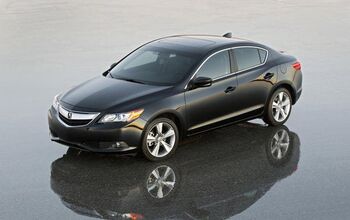

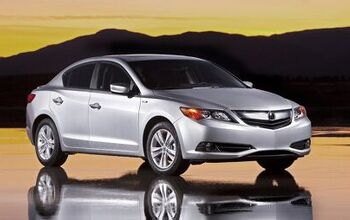
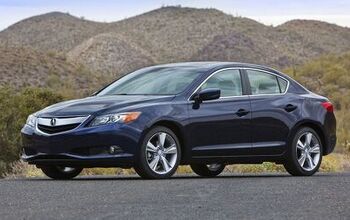
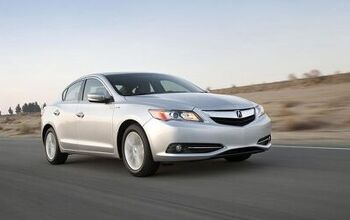

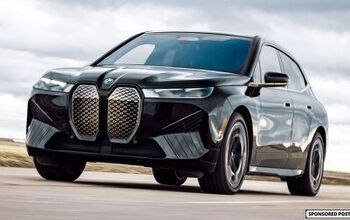








Comments
Join the conversation
Very rough ride and hard seat. Where's that damper system they keep mentioning in reviews? No lumbar on either seat, no power controls on passenger. They have minimized features to max profits hoping you buy it because it looks good. I could kick myself for not shopping around some more.